Pre Start Plus rebranded to Ideagen Asset Guard
Ideagen Plant Assessor is pleased to announce the rebrand of its flagship pre-start app, Pre Start Plus, to Asset Guard. This rebrand aligns with...
|
|
Machinery Pre Starts
|
|
|
Risk Management &
|
|
|
Document Management
|
|
|
Dashboards & Reporting
|
|
|
Machinery Risk Assessments
|
|
|
Service & Maintenance
|
|
|
Safe Operating Procedures
|
|
|
MySite
|
|
|
View All Features |
Case Studies
Hear from our clients
Events
Find us at industry events
Guides
Find industry-specific guides
Learn
Educational content
News & Articles
Industry news and articles
Safety Legislation
We keep up with safety legislation
so you don't have to
Videos
Find overviews and informative
videos here
Webinars
View upcoming and on-demand webinars
Promotions
See our current promotions
FAQ
All of our frequently asked questions
Help Centre
How to use our software
View a Demo
Let us walk you through Ideagen Plant Assessor features
Release Centre
Product updates and release information
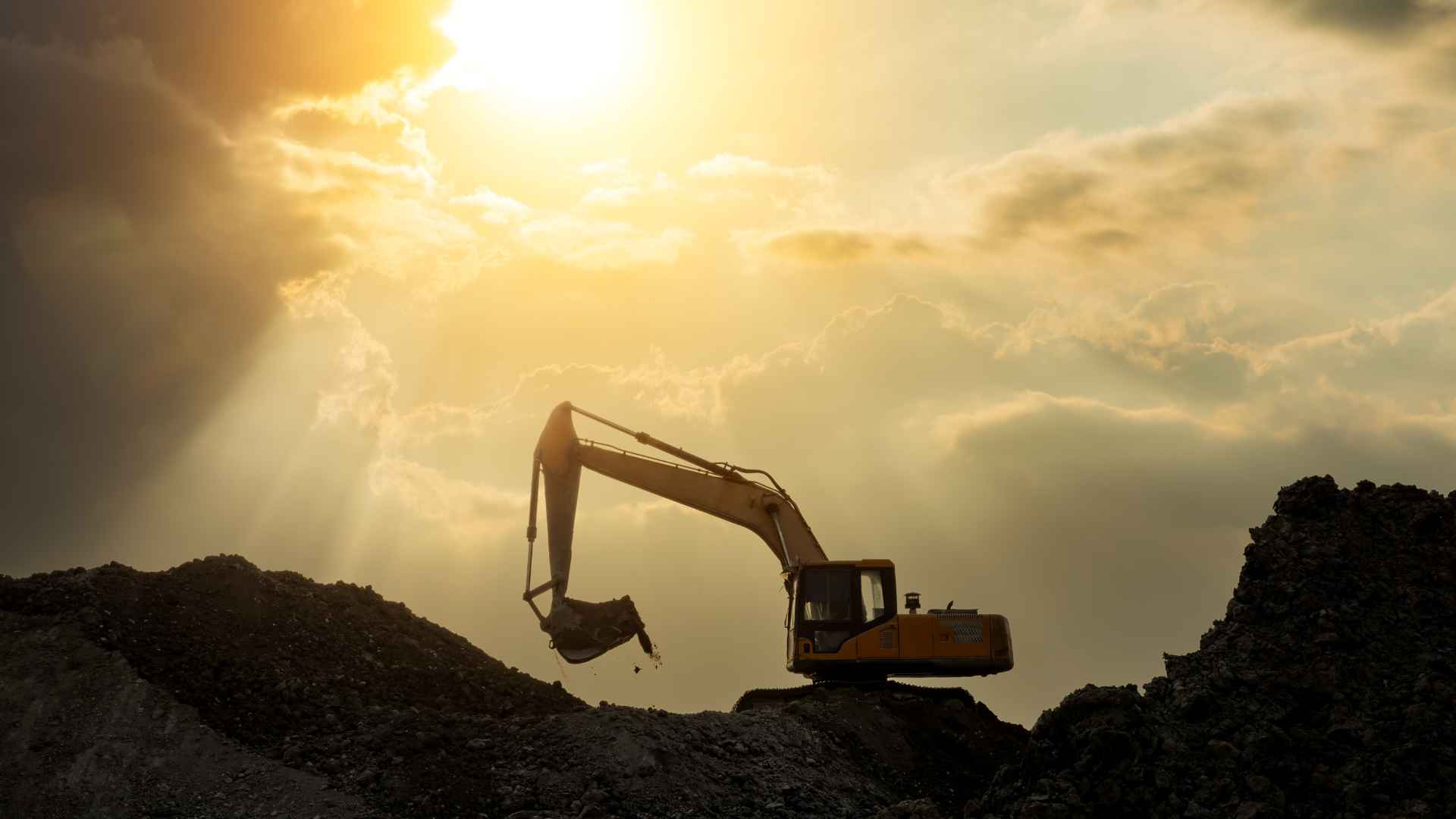
Heavy machinery plays a vital role in facilitating projects in various industries and excavators are among the most popular of these machines. This ultimate guide to excavators provides a comprehensive overview, from covering what is an excavator, to the different types and sizes in use, excavator attachments and how to operate an excavator safely.
In this article:
As their name suggests, excavators, or diggers, are heavy-duty machines designed for digging, excavating and moving earth and materials. They are versatile machines equipped with a range of functions and features that make them an ideal choice for many tasks.
In Australia, an excavator typically comprises a boom, dipper, and bucket. These essential components are connected to a cabin located on a rotating base. Many excavator cabs have the capability to rotate a full 360 degrees, ensuring optimal visibility in various working conditions. Excavators in Australia are available with either tracks or wheels and choosing between the two can often come down to the design, manufacturer preference or the requirements of your specific project.
The versatility of these machines extends beyond their basic configuration, thanks to a range of attachments that can replace the standard digging bucket. By swapping out the bucket for attachments like augers, drills, rippers or rakes, excavators become adaptable for a wide array of tasks.
Excavators can be used across a wide range of industries including:
Construction: excavators are indispensable in building and infrastructure development, from digging foundations to land clearing.
Mining: Australia's mining industry is heavily reliant on hydraulic excavators to extract minerals and metals from the earth.
Agriculture: excavators are used by farmers for trenching, irrigation and land preparation, among other things.
Landscaping: compact excavators are valuable for shaping and contouring landscapes.
Utilities: excavators are used for laying utility lines and repairing infrastructure.
There are a wide range of excavator types (or diggers) available for use in Australia, each designed for specific purposes. These include:
Crawler excavators: equipped with tracks and offer superior stability on uneven terrain. They are often used in construction and mining.
Wheeled excavators: highly mobile and suitable for tasks that require frequent relocation.
Long-reach excavators: these excavators have extended arms and are used for deep excavation or reaching over obstacles, often in ports or waterfront construction.
Short swing excavators: short swing excavators have a compact design and are ideal for use in tight spaces.
Mini excavators: compact and nimble, mini excavators are often used for urban construction and landscaping projects.
Dragline excavators: primarily used in mining, capable of moving vast amounts of earth in a single scoop.
Backhoe loaders: combine the features of an excavator and a loader, making them versatile for a variety of tasks.
Choosing the right excavator depends on various factors: project requirements, scale, terrain, required attachments, budget, transport, regulations, dealer support, operator skills, long-term plans and environmental considerations. Careful evaluation of these aspects will help you make an informed decision about which type of excavator to purchase or hire for your project.
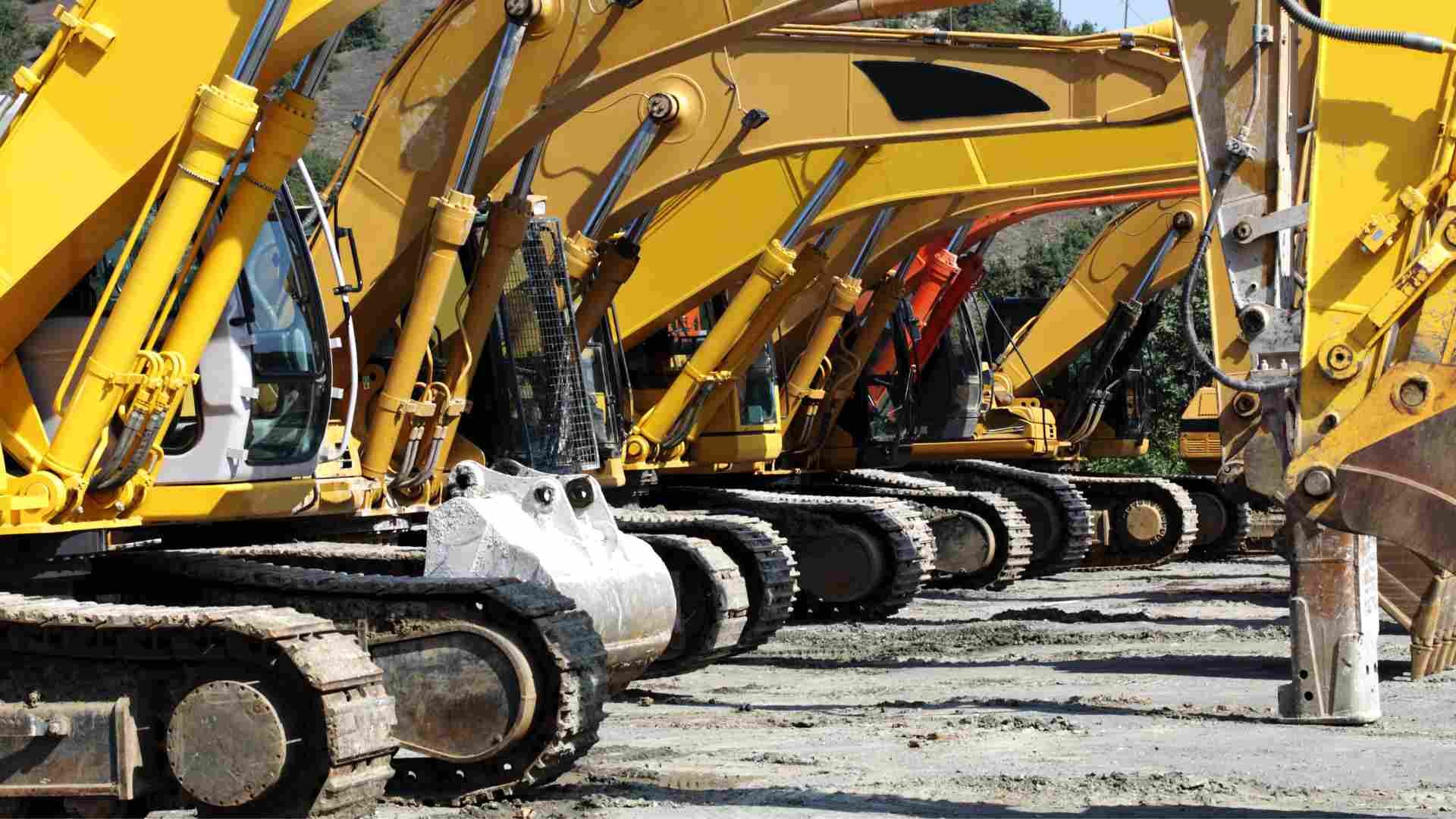
Excavators come in a number sizes and classes, with some models weighing more than 80 tonnes. The different sizes and classifications of excavators are all generally used for different purposes. The sizes and classifications include:
Compact excavators: or mini excavators, are the smallest excavators. They are commonly used in landscaping and urban construction for tight spaces and light-duty tasks.
General purpose medium excavators: offer a balance between power and manoeuvrability, making them suitable for a wide range of tasks from general and road construction, to excavation in agricultural settings.
General purpose large excavators: used in heavy construction, mining and quarrying operations, due to their ability to handle substantial loads and large-scale projects.
Excavators can be equipped with a wide range of attachments to enhance their functionality including:
Buckets: used for digging and moving materials.
Grabs: used for gripping and lifting objects.
Augers: for drilling holes in the ground.
Hydraulic breakers: used to break through hard surfaces like rock or concrete.
Shears: used to cut through metal and concrete in demolition projects.
Hydraulic quick hitches: allow for quick attachment changes.
Rippers: break up compacted soil and rock.
Tilt-rotators: offer rotational and tilting capabilities for precise positioning.
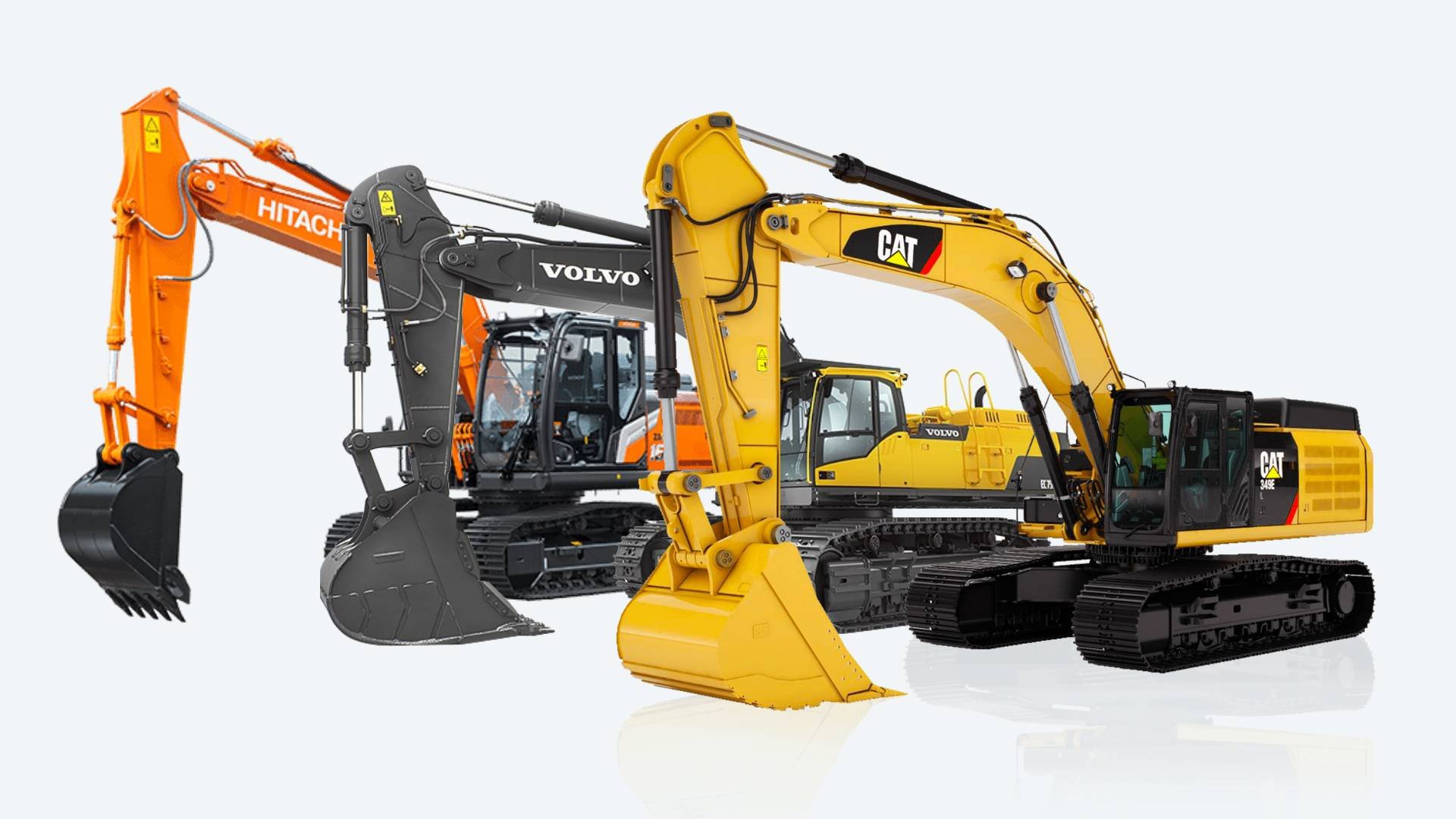
There are many makes of excavators available for purchase or hire in Australia. These manufacturers all have their own areas of specialisation and bring their own innovative technologies to their machinery, meaning your choice of brand can impact your project’s success. Some of the most popular makes of excavator in Australia include:
Caterpillar excavators are a staple in both construction and mining industries in Australia, as their robust designs and durability suit challenging terrains and environments. Technological features like the Product Link system allow operators to remotely monitor their machines, enhancing efficiency and safety. Some of the most popular Caterpillar excavator models in Australia include the Cat 320 and Cat 336.
Hitachi's excavators are known for their reliability, making them popular in the general construction and mining fields. Well known models such as the Hitachi ZX85USB-7 and ZX210LC-6 are among the most popular in Australia. Hitachi excels in hydraulic technology, with innovations such as the TRIAS III hydraulic system, which enhances efficiency and reduces fuel consumption.
Hyundai offers excavators that are ideal for general construction and earthmoving tasks. They are known for being affordable, reliable and easy to maintain. Some of the more popular models in Australia include the Hyundai R220LC-9S and R480LC-9. Hyundai's excavators often integrate precision control systems for improved performance.
JCB is widely recognised for its innovative machinery solutions. The company excels in producing a diverse range of heavy machinery, including backhoe loaders, excavators and telescopic handlers. JCB's commitment to technology and efficiency is evident in its products, which often feature cutting-edge advancements for enhanced performance. The JCB 220X excavator is among the popular models.
John Deere is widely recognised for its compact and medium excavators, making them particularly suitable for landscaping and agricultural projects. It offers popular models such as the John Deere 75G and 85G, which are known for their fuel efficiency and operator comfort. John Deere's excavators often feature air conditioned cabins for operator comfort in the extreme weather conditions Australia is known for, along with telematics systems to monitor machine health and performance.
Komatsu, a Japanese multinational corporation, is a major player in the construction equipment sector. Renowned for its cutting-edge technology and commitment to sustainability, Komatsu manufactures a wide range of construction and mining equipment. The Komatsu PC200LC-8M0 excavator is a notable example, known for its fuel efficiency and advanced hydraulic systems.
Kubota also specialises in compact and mini excavators, making them ideal for landscaping and small-scale construction projects where manoeuvrability and minimal ground disturbance are crucial. Its excavators come equipped with advanced hydraulic systems and ergonomic operator cabins, ensuring precise control and operator comfort. Some of Kubota's most popular models in Australia include the Kubota U17 and KX040-4.
Kobelco offers excavators in all sizes and for various applications, including general construction and mining. Its focus is on fuel efficiency and its excavators incorporate unique technologies like the Integrated Noise and Dust Reduction (iNDr) system, which is especially ideal in areas with sensitive environments. Some of Kobelco's popular models in Australia include the Kobelco SK210LC-10 and SK500LC-10.
Volvo's excavators are sought after for their exceptional performance during heavy-duty applications and are commonly used in large-scale construction and mining operations throughout the country. This manufacturer focuses on fuel efficiency and its advanced engines and telematics systems including CareTrack help operators manage fuel consumption and track machine data accurately. Some of Volvo's popular models in Australia include the Volvo EC220E and EC480E.
XCMG is a prominent Chinese construction machinery manufacturer and has established itself as a global leader in the industry. Specialising in a wide range of heavy equipment, XCMG's portfolio includes cranes, excavators and road machinery. The company's commitment to quality and innovation is reflected in its excavators, such as the XE215D, known for their robust design and advanced features.
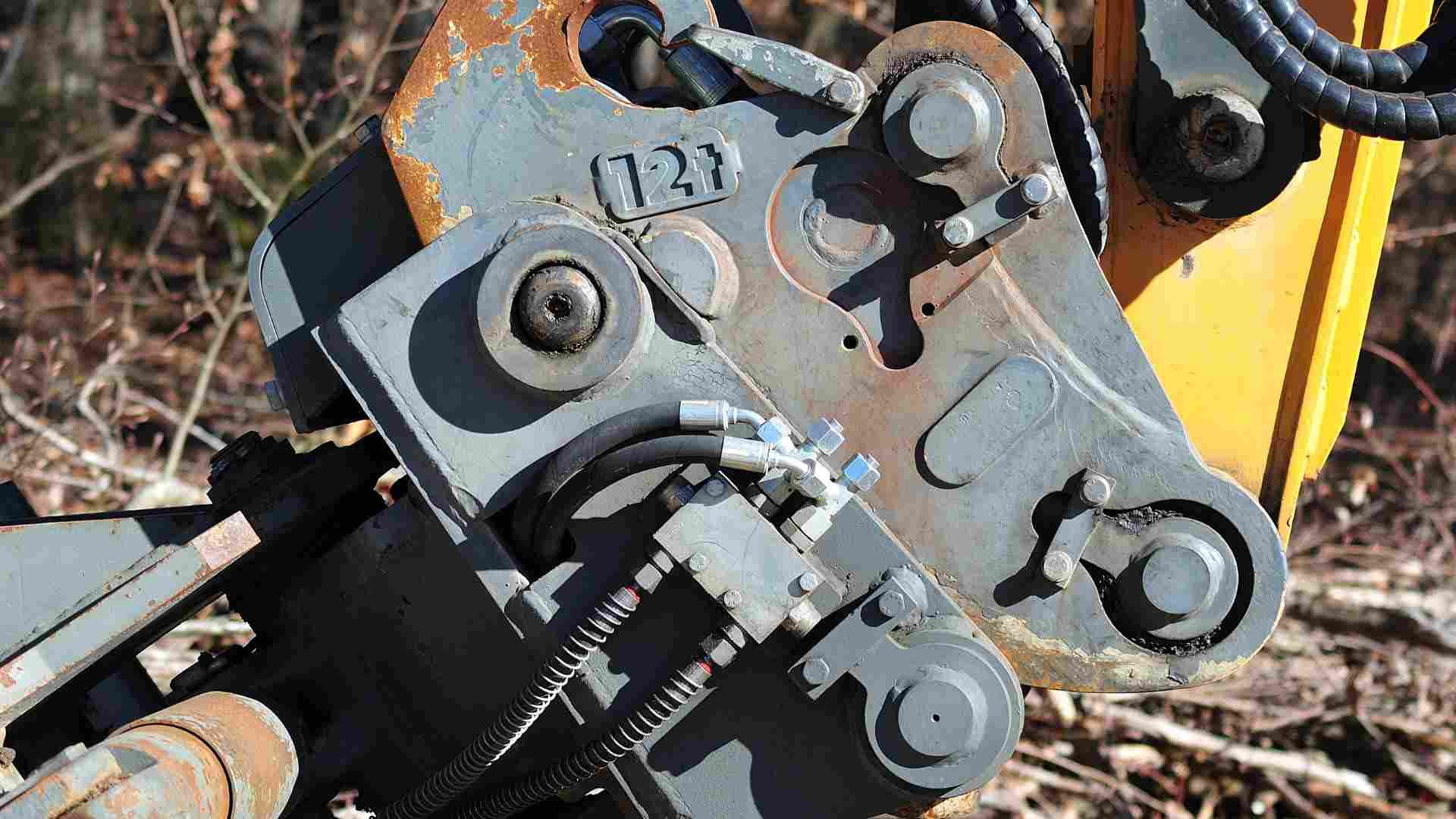
Operating an excavator, like any heavy machinery, presents various potential hazards to operators and those in the immediate vicinity. While operating heavy equipment, there are measures that can be taken to reduce these risks and hazards including:
Ensure that operators are adequately trained on how to operate an excavator, and are experienced and certified to operate excavators. They should possess the necessary licences, skills and knowledge to handle the equipment safely. The specific type of license or certification needed depends on the class and size of the excavator, as well as the state or territory in which the work is performed.
Operators should wear appropriate PPE including high-vis clothing, steel-cap boots, gloves and ear protection to safeguard against various hazards on the job site and while operating heavy equipment.
Operators must perform pre start checks on an excavator before use to ensure it is in good working order. This includes inspecting the machine's systems, controls, hydraulics and safety features.
Develop and implement clear SOPs for excavator operation, addressing specific tasks and potential hazards. Operators should adhere to these procedures at all times during the operation of an excavator.
Ensure the work site where the excavator will be operating is properly prepared and free of potential hazards, such as unstable ground or overhead obstacles. Barricades and signage should also be used to keep unauthorised personnel away from the excavation area, especially while machines are operating.
Always maintain a safe distance from overhead power lines to avoid electrical hazards. This can be achieved by implementing proper exclusion zones and precautions. For more information about managing the risks of operating machinery around overhead power lines, see our article Overhead power lines - the silent killer.
When digging trenches with an excavator, follow proper sloping and benching procedures to prevent cave-ins and ensure the stability of the excavation.
Operators should be aware of the maximum depth limitations for their excavator model and ensure they do not exceed these limits.
When using hydraulic attachments, follow manufacturer guidelines for installation, operation, and maintenance. Be cautious when changing attachments or when using hydraulic couplers as this can be hazardous.
Maintain clear communication between operators, spotters and other workers on the job site to prevent incidents from occurring and ensure the safe movement of the excavator.
When excavating in trenches, ensure adequate protection measures like shoring, sloping or shielding are in place to prevent cave-ins.
Equip excavators with proximity sensors and cameras to enhance visibility and help detect objects or workers in blind spots.
Establish emergency response procedures and ensure all personnel are trained in case of incidents involving excavators or equipment malfunctions.
Implement a maintenance schedule to keep your excavator in optimal condition, reducing the risk of unexpected breakdowns and unnecessary downtime.
By following these safety guidelines, operators and workers can significantly reduce the risk of incidents and injuries when using excavators. Safety should always be top priority on site to help ensure the wellbeing of workers and the successful completion of projects.
.jpg?width=740&height=416&name=MKT-2985%20-%20The%20ultimate%20guide%20to%20excavators%20(1).jpg)
Conducting risk assessments on excavators is essential to ensure the safety of both operators and those working in the vicinity of the equipment. Here's a guide on what a thorough risk assessment for an excavator should cover.
Excavators are powerful and versatile construction machines with various innate hazards that operators and workers need to be aware of to ensure safety on the job. Some common hazards associated with excavators include:
Tipping and overturning: excavators have a high centre of gravity and operating on uneven or unstable terrain can lead to tipping or overturning, potentially causing serious incidents.
Struck-by incidents: workers on the ground can be struck by the excavator's moving parts or the materials being handled. It's important to maintain a safe distance from the machine during operation.
Cave-ins: when trenching with an excavator, the potential for the walls of the trench to collapse increases, which can trap or bury workers.
Contact with underground utilities: excavators can accidentally damage underground utilities like gas lines, water pipes, and electrical cables, leading to gas leaks, electrical hazards, or water main breaks.
Entanglement and crush hazards: workers can get caught or crushed by the excavator's moving parts such as the bucket or tracks.
Hydraulic system hazards: excavators rely on hydraulic systems for their movements and hydraulic fluid leaks or system failures can result in fluid injection injuries, fires or hydraulic component malfunctions.
Falls from the equipment: operators and workers climbing on or off the excavator can fall and injure themselves, especially in slippery or precarious conditions.
Pinch points: excavators have many moving parts and components with pinch points that can trap or crush body parts if not handled carefully.
Noise and vibration: prolonged exposure to the noise and vibration from an excavator can lead to hearing loss and physical discomfort for operators and nearby workers.
Maintenance and repair hazards: performing maintenance and repairs on excavators can expose workers to electrical, hydraulic and mechanical hazards, as well as the risk of being trapped or crushed.
The next step is to determine the control measures necessary to mitigate the identified risks and hazards on an excavator. Common control measures for excavators include:
Operator training and certification.
Safety signage and barriers.
Proper maintenance and inspection of the equipment.
SOPs.
Adequate lighting and visibility.
Clear communication between operators and ground personnel.
After implementing control measures, assess the residual risks. If significant risks remain, it is recommended you re-evaluate and strengthen control measures where possible. You must also ensure all workers are aware of the risks and control measures, as effective communication can help prevent accidents and injuries.
Record keeping for excavators is crucial for safety, compliance and efficiency. It involves documenting maintenance, inspections, work history and safety incidents relating to your excavator. These records help to ensure compliance with regulations, facilitate warranty claims and insurance processing and help assess the equipment's condition and history. They also support proactive maintenance, cost control and effective resource allocation while serving as valuable evidence in the event of an audit.
Toolbox talks and safety meetings are a valuable tool for emergency response as they raise awareness, educate excavator operators and workers on emergency procedures and promote effective communication and coordination. These meetings enhance preparedness, helping reduce the risk of incidents and minimise damage during emergencies involving excavators. Topics should include:
What to do during operation.
What not to do while operating.
Factors that determine appropriate control measures.
Protective systems that can be used to protect against cave-ins.
Emergency procedures for operation.
Being aware of and complying with local, state and national legislation, standards, regulations and codes of practice governing excavator operations and safety is important. For more information on legislation relevant to your jurisdiction, check out our guide Safety legislation and obligations for machinery owners and suppliers.
Our team of machinery experts love to chat all things excavators. If you need further guidance on the safety and compliance of your excavators, don’t hesitate to contact us on 1300 728 852 or info@assessor.com.au.
Disclaimer: This information is intended to provide general information on the subject matter. This is not intended as legal or expert advice for your specific situation. You should seek professional advice before acting or relying on the content of this information.

Ideagen Plant Assessor is pleased to announce the rebrand of its flagship pre-start app, Pre Start Plus, to Asset Guard. This rebrand aligns with...
.png)
Many businesses operating machinery still rely on traditional paper pre start books for daily machinery checks. While these booklets serve their...
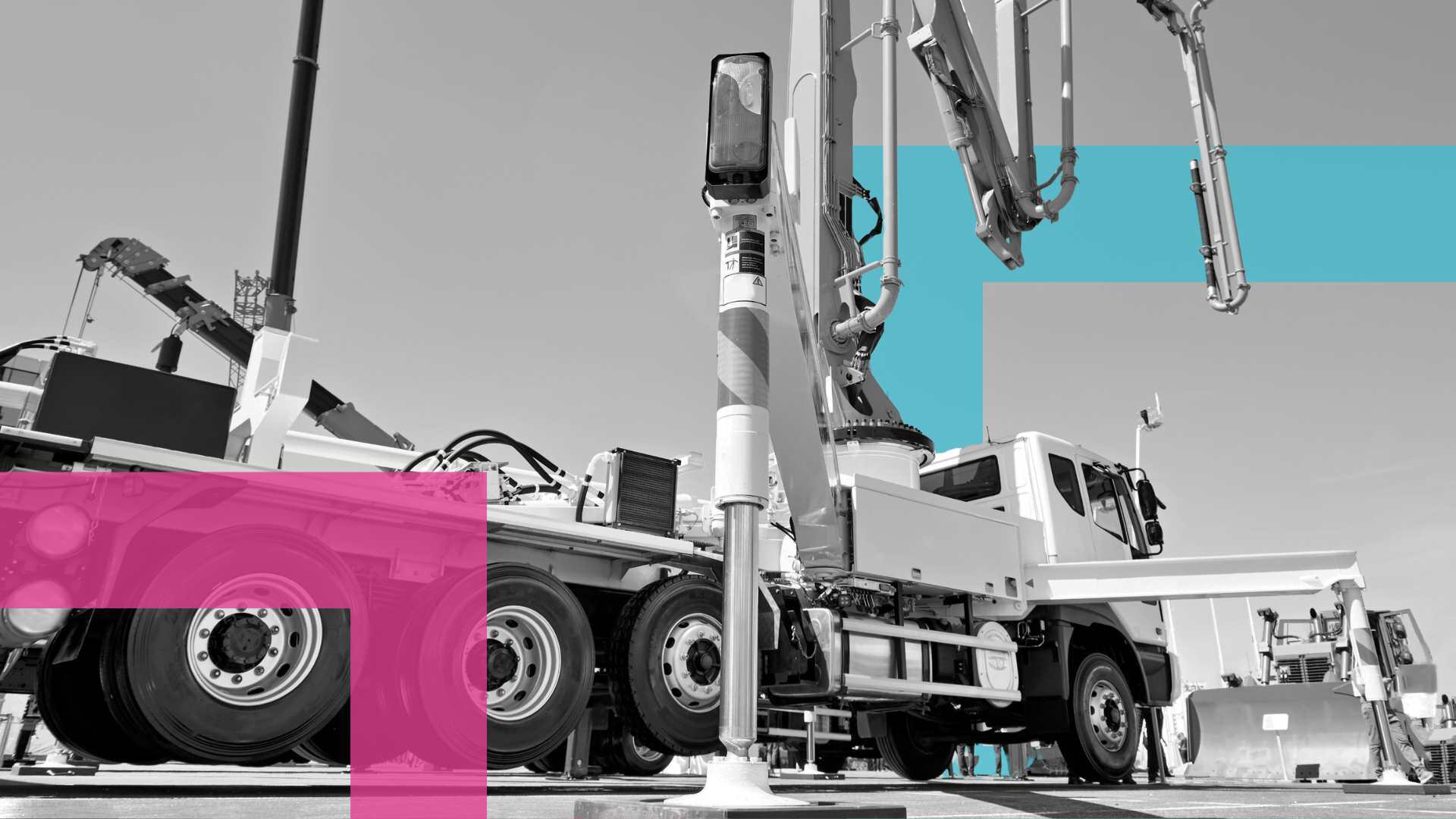
A concrete company based in Melbourne has been convicted and fined $30,000 after an incident involving a concrete pump resulted in a worker’s hand...